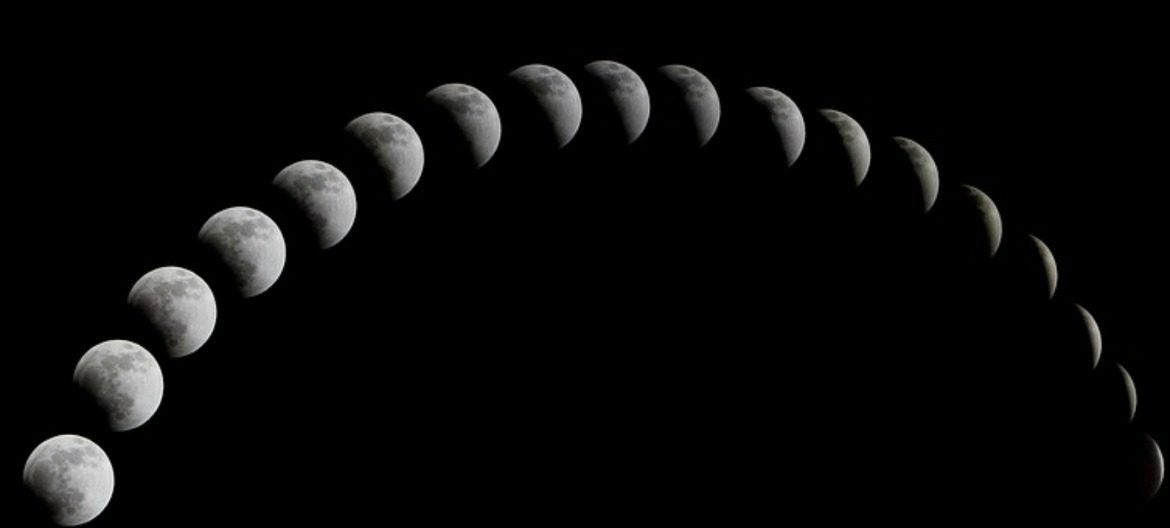The seven day long week dominates

Modern meaning of days
Calendars seem to run human existence. Our whole life revolves around the different days of the week. Even our habits are synchronized with the different days. Monday usually means a new work week. It represents a new beginning and a new beginning. Tuesday, Wednesday and Thursday are connected in a kind of obstacle in the middle of the week. Friday as the Holy Grail on weekdays. It's happy hour after work, a time to relax. Saturday is known as a day with the family. It is an opportunity to rest and recharge. This leaves Sunday as a limbo between the weekend's fun and everyday tasks. You can even get a case on "Sunday Blues" or "Sunday Scaries". We associate these feelings with the fear of starting a new week. A new week means resuming work or responsibilities.
Astronomical Influences
This seven-day week is accepted without thinking. Where did the concept of a seven-day week actually come from? Who basically marked every day in a cyclical way? Where do the names come from? The answer is not simple. It's a little more complicated than you might think. Astrological events and celestial bodies strongly inspired the numerical significance of the seven-day week. Correspondingly, ancient gods and deities inspired the name of these days. Every day traditionally offers an opportunity for worship and thanksgiving. Let's start by traveling back in time to early Mesopotamia. All the way back to the first millennium. The answer is literally written in the stars.
The Babylonian creation of the seven day long week

Babylonian astronomy and the concept of time
In early Mesopotamia, the movement of the sky — the stars, the sun, the moon, and the planets — inspired the Babylonians. These celestial bodies seemed to synchronize with human daily habits. Their lives seemed indirectly affected by the overhead movement. These observations fascinated Babylonian astronomers. Early astronomers recognized the mathematical space patterns. They even discovered how this movement correlates with the concept of time. For example, they observed that a full rotation of the earth around its axis marks an entire day. An entire revolution of the earth around the sun - or 365 days - marks a whole year. They used these observations to implement a solar calendar. This calendar lets humanity tell time. It also provides the opportunity to communicate this concept of time and coordinate on a large scale.
The mathematical calculation of days
The Babylonians were so thorough that they even included a leap year. This leap year, February extra day every four years, constitutes the extra ¼ day every year. However, not all time goals fit nicely into a coordinated package. For example, the lunar cycle is just over 27 days long. It includes 13 phases throughout each solar year. This means that the cycle does not exactly correspond to an entire calendar month. Therefore, the concept of months and weeks was a little harder to imagine than the easy-to-understand solar-based days and years. The lunar cycle - or lunar cycle - still severely affects the calculation of months throughout the solar year. This cycle sets the standard for months and lasts on average about thirty days.
Division of the lunar cycle
The entire 28-day lunar cycle was still too long. The Babylonians thus divided it into four equal parts. This division into four seven-day weeks inspired better time management. Unlike the days and years that nicely follow sun patterns, the weeks and months did not. This resulted in some unavoidable, yet accepted inconsistencies. However, due to the popularity and dominance of Babylonian culture, other cultures maintained the seven-day calendar. Other Babylonian time concepts, such as sixty minutes, also prevailed.

Why seven-day weeks?
Where exactly did the Babylonians get the number seven from in these calculations? The seven-day week was finally adopted because of the Babylonians' observations of the seven celestial bodies. The naked eye observed seven total celestial bodies at that time. They believed that these celestial bodies were gods. These "gods" inspired the names of the days of the week. The five recognized planets known to them at that time were Mercury, Venus, Mars, Jupiter and Saturn. The sun and the moon were the last two inspirations. Since these were the seven significant celestial bodies seen with the naked eye, the number seven had great significance for them.
Babylonian influence on other cultures and seven-day weeks

Egyptian Decans and the Extinct Ten-Day Week
Although the seven-day week is familiar to people
in modern times this was not the only option in the first place. For example, the early Egyptians divided the months into decans. These deans consist of three ten-day periods, instead of four seven-day periods. The Egyptians followed the solar calendar, on a par with the Babylonians. However, their twelve months broke out a little differently. The Egyptians divided their 365-day year into three seasons of 120 days each. At the peak of these seasons was the inclusion of five extra days, to 365 days in total. Despite this, their calendar did not quite match the solar year. They lost a whole day every four years. This was something the Babylonians did not do, probably thanks to the leap year.
Egyptians and the influence of the moon
It is believed that the Egyptians based their first calendars on lunar cycles, rather than solar cycles. Their calendar consisted primarily of the phases of the moon throughout the month. Since the lunar cycles go closer to ten-day periods than seven days, it is likely why ten stuck out to them. Although the Egyptians were not the only culture to adapt to a week of numbers other than seven, they were one of the most popular contradictions. Although the Babylonian week won the battle, it held on for a long time with its seven-day week. It shows how influential Babylonian culture was at the turn of the millennium.

The Romans and an eight-day week
Originally, the Romans followed an eight-day week. They even used a system of dominant letters (AG) to determine the days of the week, instead of identifying the days by their own name. The Romans devoted the first seven days of the week to work. On the eighth and final day, they would shop and prepare for the new week. But as they began to conquer Alexander the Great's territory, influence shifted. The seven-day week began to increase in popularity. Early in 321 AD. declared Emperor Constantine seven days weeks as the standard. This standard included Sunday as a holiday - shopping day.
Roman gods and the transition to seven days weeks
Even as Christianity became the leading religion of the Romans, they continued to follow the seven-day week. The biggest change was the value of Saturday, instead of Sunday. Christians adopted the seventh day of rest of the ancient Israelites. This was the only named day of the week for Israelites at that time - the Sabbath. Shopping and preparation for the week on Sunday was no longer the standard. Instead, Saturday was a day of rest, transferred from the Jewish Sabbath. This transferred to Christianity, and thus to the Roman Empire entirely. The Sabbath is considered the seventh and last day of the week. This probably contributes to Sunday as the start of a new week, or the first day of the week, instead of Monday.
Roman Days of the Week in Latin
The Romans first based the names of the days of the week on their own deities. The Latin names for the days of the week are:dies Lunae (Luna's Day) named after the moon goddess, Luna, for Monday; Tuesday is the death of Martis (Mar's Day) named after the god of war, Mars; On Wednesday, dies Mercurii (Mercury Day) is named after the god of trade and messenger, Mercury; On Thursday, dies Jovis (Jupiter's Day) is named after the god of heaven and thunder, Jupiter; Friday is dies Veneris (Venus Day) in honor of the goddess of love Venus; Saturday is dies Saturni (Saturn's day) after the planet; finally, Sunday is dies Solis (Sun Day) after the Roman sun god, Sol. Modern Spanish speakers may notice the similarities between these names compared to the original Roman names; This is because Latin strongly influenced the Spanish language. The weekdays in modern Spanish are:lunes, martes, miércoles, jueves, viernes, sábado and domingo.

Anglo-Saxons and the seven-day week
Eventually, Roman and Germanic people came into contact. Inspired by the success of the Roman Empire, these Germanic tribes — among them Anglo-Saxons — followed the Roman seven-day calendar. However, they changed some of the names to worship their own gods instead of the Roman gods. These names were based on the original pagan gods, with an Anglo-Saxon twist. These were the gods worshiped by many Anglo - Saxons and Norse people, before Christianity rose in popularity. The names of the week were Monandæg, Tiwesdæg, Wodnesdæg, Ðunresdæg, Frigedæg, Sæternesdæg and Sunnandæg.
Anglo-Saxon days of the week in Old English
Although these words are Anglo-Saxon, also known as Old English in modern times, it is not difficult to see how modern English stayed close to the original names:Monandæg or Monday, literally known as Moon Day, or Day of the Moon; Tiwesdæg, or Tuesday, is the day of the Scandinavian sky god. This god is known by a few names, such as Tiw, Tiu or Tig, resulting in the name of Tiw's Day; Wodnesdæg, or Wednesday, is Woden's day - the god of war and an original god in Norse mythology; Ðunresdæg, or Thursday, comes from Thor's Day. This is the god Ðunor or Thunor (Thor). Thor is the Norse god of thunder and lightning; Frigedæg is Freyja's day - after the goddess of love Freyja, who was Woden's wife - and translates to Friday; Sæternesdæg is Saturn's day, or Saturday. The day of the Roman god Saturn, a god associated with wealth, abundance and time; finally it's Sunday egg, or Sunday. Translation literally from the day of the sun, or the day of the sun.

Norwegian mythology and original pagan gods
Like the Anglo-Saxons, it was the Nordic Germanic peoples who originally believed in paganism. They worshiped the ancient Germanic gods. Although there are many similarities between Norse and Anglo - Saxon culture, the main difference is that Nordic people worshiped the original pagan gods. Meanwhile, the Anglo-Saxons adopted these gods as their own, before converting to Christianity. For example, the Anglo-Saxon god Woden worshiped. Woden, known as the god of war, was originally Odin in Norse mythology. Although the changes are small, they are still significant enough to result in different names on weekdays.
Old Norse weekdays
In Old Norse, the days were:Mánadagr, named after the moon, which was known as "Mani" in Nordic areas; Tysdagr, named after Tyr who was god of justice and war; Óðinsdagr, derived from the name Odin, the most powerful and prominent god in Norse mythology; Þórsdagr, named after Thor, the god of thunder. Friday, named after Frigg, the goddess of marriage and love, and Odin's wife. Saturday, translated as "bath day" or "hot water day" since "guild" means bath or hot water and "day" means day; Sunday, the day of 'Sun' or sun. Although the Norse and Anglo - Saxon names are quite similar, they still vary enough to highlight the linguistic, cultural and religious differences between the two cultures.
Lasts over time, despite different cultural influences

Replay the timeline
To summarize the timeline, we go back to early AD Babylonia. This is where sharp astrologers observed changes in the night sky. They linked these changes to the solar cycle and human concepts of time. These Babylonians then implemented a seven-day week based on their observations and interpretations of celestial bodies as deities. Due to its cultural appearance, this Babylonian influence persisted, and later shaped the Roman and Germanic calendars.
The Roman, Nordic, and Anglo-Saxon peoples each adopted this function, while adding their own deities for worship in their own languages. Although times have changed, these original names are still evident in modern languages. For example, the Latin-based Roman names for the days of the week shine through the modern Spanish names. Anglo-Saxon and Old Norse names are clear in modern English (which is strongly based on Old English and other Old Germanic languages).

Finding cultural meanings in anthropology
Despite the differences in these cultures and time frames, the names of the days of the week reflect the influence of early religion and astrology. One thing the Babylonians, Romans, and Anglo-Saxons had in common was their fascination with celestial bodies and the worship of gods. They associated every day of the week with a planet, gods or both. This offered a specific day of designated worship and thanksgiving. Modern English names for weekdays are based on Babylon's original seven-day calendar — and subsequent Roman adaptation — but also heavily inspired by the Anglo - Saxons and their ancient Germanic and Norse deities.
The times have changed. The worship of gods and planetary fascination are not as widespread. However, the days of the week still strongly affect our lives and offer a way to connect between space and time. Modern English days of the week reflect a mixture of Roman, Anglo-Saxon and Norse gods — resulting in a jug of ancient culture. Modern calendars mix these factors together.
Following the history of these frequently used words provides deep insight. Insight beyond basic language. It gives a glimpse into the past. It sheds light on religions, deities and cultures that may disappear. So next time you count down the days to happy hour on Friday, remember to thank Venus, Freyja or the Frigg goddess of love from Roman, Anglo-Saxon and Norse culture respectively - for her day.
